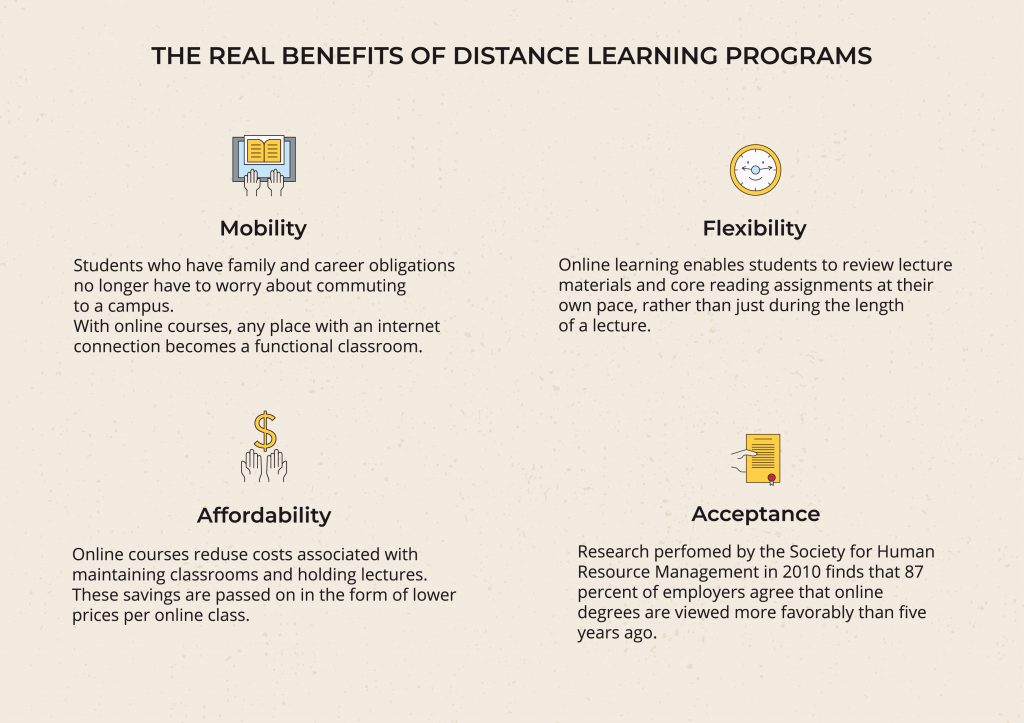What It Takes to Build an e-Learning Website

According to Statista, the global e-learning market is forecasted to grow and surpass 243 billion U.S. dollars by 2022. That forecast was made even before the COVID-19 outbreak when online education went viral. Now that people have learned how much of their work and studies they can do online, on computers and smartphones, those numbers will probably exceed the expectations.
Despite the current economic recession, we wouldn’t be surprised to witness a surge of educational startups soon. However, a brilliant idea doesn’t always ensure success. It’s rather a combination of excellent ideas, useful and unique e-learning website features, and the right business model that may enable a product to compete with Coursera or Udemy.
What core features should a minimum viable product include? How shall an e-learning platform generate revenue? What is the cost of e-learning development? In this article, we will try to answer these questions.
e-Learning Websites in a Nutshell
The most popular category of educational websites is online course marketplaces, such as Coursera, edX, Udacity, or Udemy. Massive online open courses, game-like language courses, or an e-learning website for a business — regardless of the type, they allow learners the freedom of choice and independence in their studies. Users can learn at their own pace and get tangible results, e.g., expanded vocabulary or even certificates from international universities.
Online learning marketplaces offer educational content in multiple formats: text, video, audio, games, podcasts, exercises, tests, quizzes, etc. Learners can access tutorials, lectures, guides, or other information bit-by-bit, ‘one step at a time,’ pause and resume learning, go back to materials when they need to brush up on something, and so forth.

There is no universal online education business model; even websites within the same category can have different approaches and methods. For example, Coursera and Udemy are both online course marketplaces, but their business models are different.
All the mechanics of Coursera are designed to maximize the quality of education. The platform cooperates with renowned universities, colleges, and other educational institutions. Currently, over 200 leading universities and companies are providing over 4,000 training programs and courses.
According to Forbes, Coursera is already worth more than one billion dollars. It has gone through a long monetization journey, but the option to audit courses for free is still intact. Otherwise, learners can purchase so-called specialization packs that cost around $39-79/month, get an online degree for a fee ranging from $15 to $30K, or attend one of 19,000 business courses that will cost around $400/year. In this manner, Coursera manages to provide online education for every taste and budget.
Udemy relies both on quality and quantity of educational content. Currently, it offers over 150,000 courses, including 4,000 for businesses. They are usually created by individual tutors and are shorter than Coursera’s. All creators pass verifications and quality reviews before their content is published on Udemy that works more like a mediator between learners and tutors. The cost of online courses starts from $9 for a course; there are also seasonal sales. Udemy earns money in three ways:
- If the tutor’s reputation precedes them and attracts learners to the platform, Udemy would keep 3% of the tutor’s earnings;
- If students enroll in the course due to Udemy’s marketing efforts, Udemy keeps 50% of the tutor’s earnings;
- If students enroll with the help of Udemy’s promotional affiliates, the platform receives 25%, and so does the tutor, and 50% goes to the affiliate.
The most popular e-learning pricing models today are:
1. Traditional pricing model. The user picks one specific course and pays for it. This model can be applied to any e-learning platform but works best for new businesses and courses-only platforms.
2. Subscription-based model. It is more like Netflix, where the user pays monthly or annually to get unlimited access to wherever courses the platform offers. Skillshare is an example. This model works best for creative skills or business training.
3. Freemium pricing model. By offering some free services, a platform builds a relationship with users and a foundation for future purchases. The trick is to determine the right amount of content available for free and to make learners want to pay for more.
Core e-Learning Platform Features
For the delivery and monetization of educational content, every e-learning platform should have the following features:
1. Registration and login features, preferably using social network accounts, although the classical combination of email and password will do.
2. User profile. Besides the user’s name, picture, and other relevant information, the page should also include dashboards with information on courses or classes that are active, completed, and saved for the future. History is a useful feature, especially if the platform delivers video or audio materials. Achievements or similar information make an account more likable. For tutors, the profile page should contain more information about their experience, degrees, and the courses that they have published.
3. Search engine. Several search options will be necessary to help users find courses, tutors, and educational materials on your website. That includes categories, filters, keywords, and recommendations of similar courses.
4. Courses pages. Every course shall have its page with a detailed description. If applicable, the cost of online courses should be clearly stated. The pages can also have a review area.
5. Courses editor. If your e-learning website allows tutors to build their courses right in the system, there should be learning management system (LMS) features for creating and editing the content, adding tests, and so forth.
6. Payment systems. If you target only one region or country, you may use the method that is most popular there, e.g., PayPal and credit card, but it is recommended to add more options for users to choose. Also, tutors should have a convenient way to collect their earnings. All payments should be secure.
7. Notification system. By reminding learners of deadlines or updating them on discounts or fresh relevant materials, you would keep them engaged. Just don’t make the notifications too annoying.
8. Admin panel. The administrators or moderators of your platform will need tools for managing the courses and users, reporting and analytics, content and notification editors, etc.
This bare minimum of core e-learning platform features can be enriched with whatever functionalities you fancy. All components and features of your platform should be useful, user-friendly, and further your business goals. Otherwise, they may distract users from studies and otherwise disrupt the learning experience.
Things to Do before Building an e-Learning Website
Today, creating an online course or a whole online course marketplace is pretty simple technically but shouldn’t be taken lightly. Lots of expertise, research, and effort will be required when you just start devising your e-learning business plan. Modern learners have plenty of options, so it is essential to make your platform engaging, even addictive, and make it stand out from the crowd. Let us share some advice that can help improve your odds of success:
1. Let your target audience and competition guide you. You can always try to engage everyone of any age and social background, but it is better to choose your niche and stick to it. Analyze your target audience’s needs and leisure habits. Personalize the content according to their needs. It should be both helpful and engaging. A nice trick is to research your competitors and see how they approached the challenges you are facing.
2. Choose your teams carefully. A template-based website is easier to build, but it will be short on customization. If you go for custom software development, outsourcing the project can make it cheaper without compromising quality. Platforms like Clutch, where you can sort companies by country, reviews, and hourly rates, will be helpful. An agency’s portfolio should prove their experience in e-learning development.
3. Create or curate the best educational content. To accomplish this, you will need excellent educators onboard. The smoothest way to develop an online course is to cooperate with universities or other educational institutions. Even if you choose Udemy’s business model, you would need tutors to help kick-start your platform with the first courses. Skillshare and MasterClass did just that, but the latter concentrated on big names, such as Bobbi Brown or Neil Gaiman.

Last but not least, think about how people will learn about your educational platform. For example, you might try email marketing, social media, discounts, and demos. Your competitors, educators on your team, and the software development agency you hire will provide more ideas. The final marketing strategy will hugely depend on your product, but it’s good to have some ideas beforehand.
The Cost of e-Learning Development
Estimating the overall price is not an easy task since eLearning development costs depend on many factors.
Some factors affecting the costs to develop an eLearning platform include:
- The project’s requirements and unique features;
- Material complexity;
- Technologies used;
- Employees’ time;
- Subject matter experts’ time;
- Hosting fees;
- Upgrades, etc.
For instance, relatively simple online courses may cost $20K to develop and more sophisticated courses of the same length — up to $100K. To reduce the cost of online course development, it is recommended from the start to create the content as rich as possible but make its delivery format as simple as possible. That will make the content delivery flexible and easy to update when needed.
On average, an e-learning website with basic features may take almost 1,200 hours to build. This number is approximate, and the final price will depend on your choice of the software development company and, especially, its range of services. Both their track record and hourly rates matter. For example, if it is an outsourcing web development company based in Eastern Europe, they may charge $25-50 per hour.

The development will be more expensive in Western Europe, at $75 per hour, and even pricier in North America ($90/hour), according to the Existek report.
Regardless of the location, the more experienced a team is in building online learning platforms, the faster they will work, saving your time and money.
e-Learning website development can be summed up in three processes: ideation and planning, creating study materials, and the actual building of the digital platform. For the first two, you don’t even need any programming skills. The third part requires not only that: a thorough understanding of complex eLearning platforms and LMS and the appropriate development experience are essential.
At whatever stage you are with your e-learning website or mobile application, if you need a consultation or assistance, please feel free to contact Alternative-spaces. We will be happy to help!
Content created by our partner, Onix-systems.
 Home
Home
